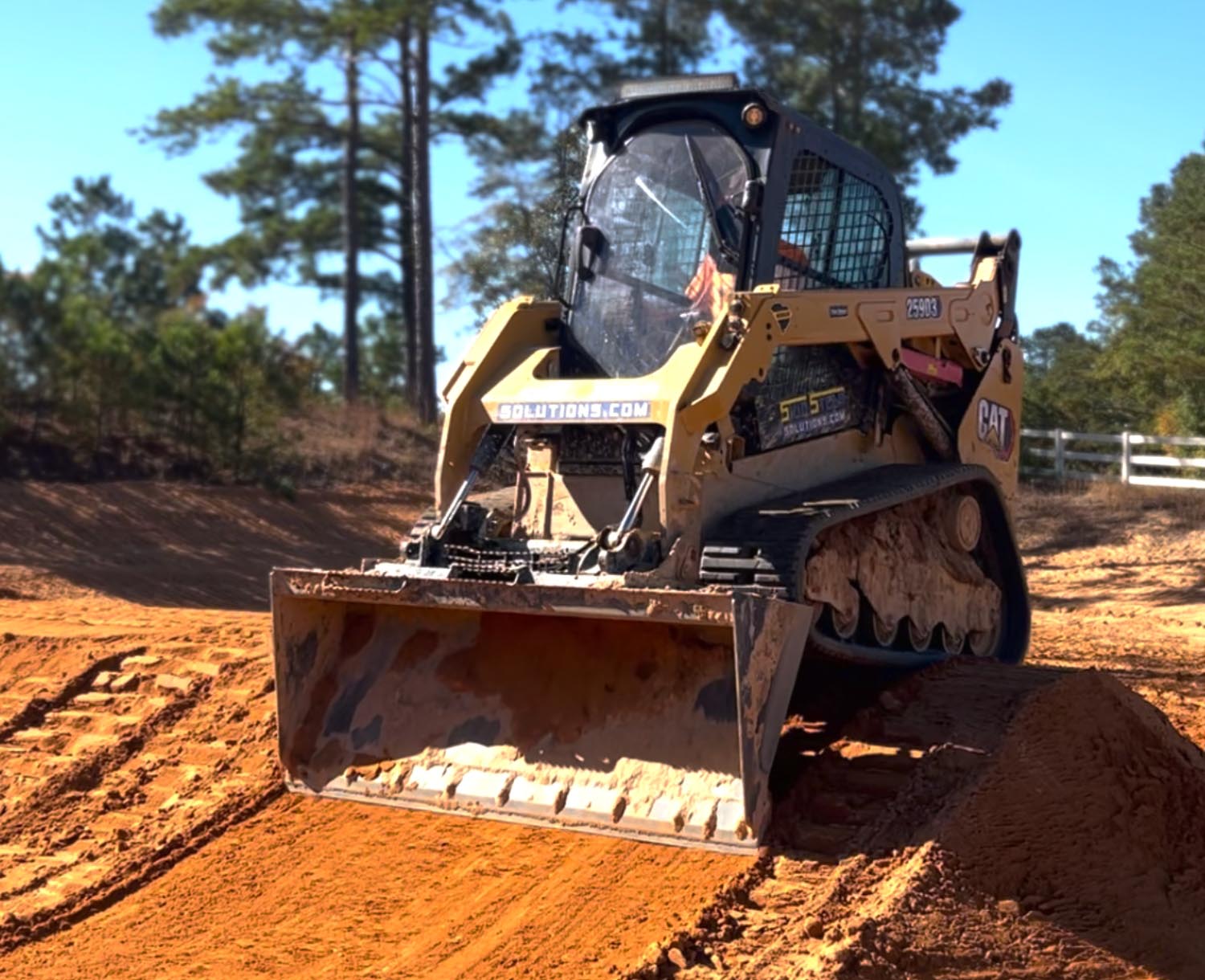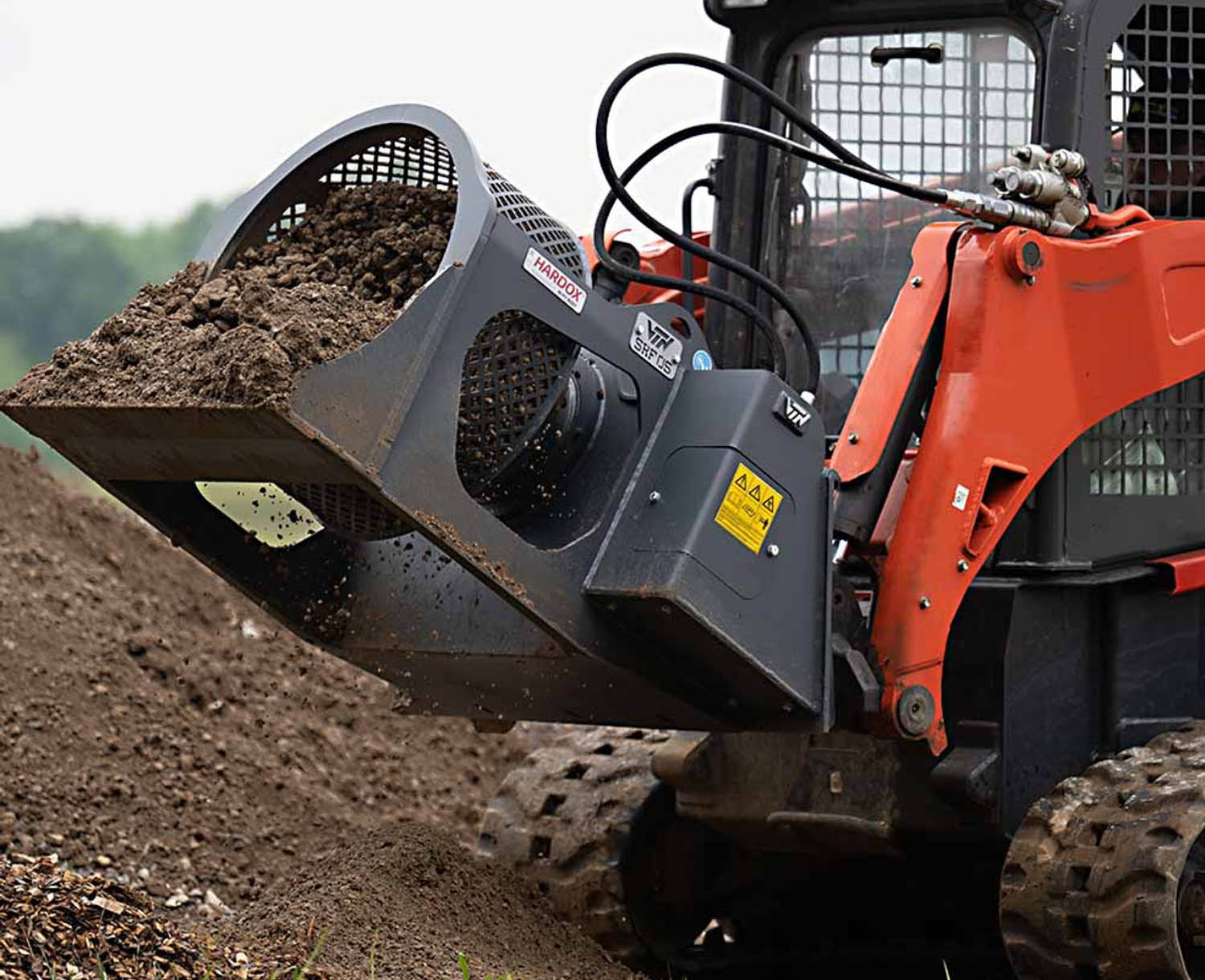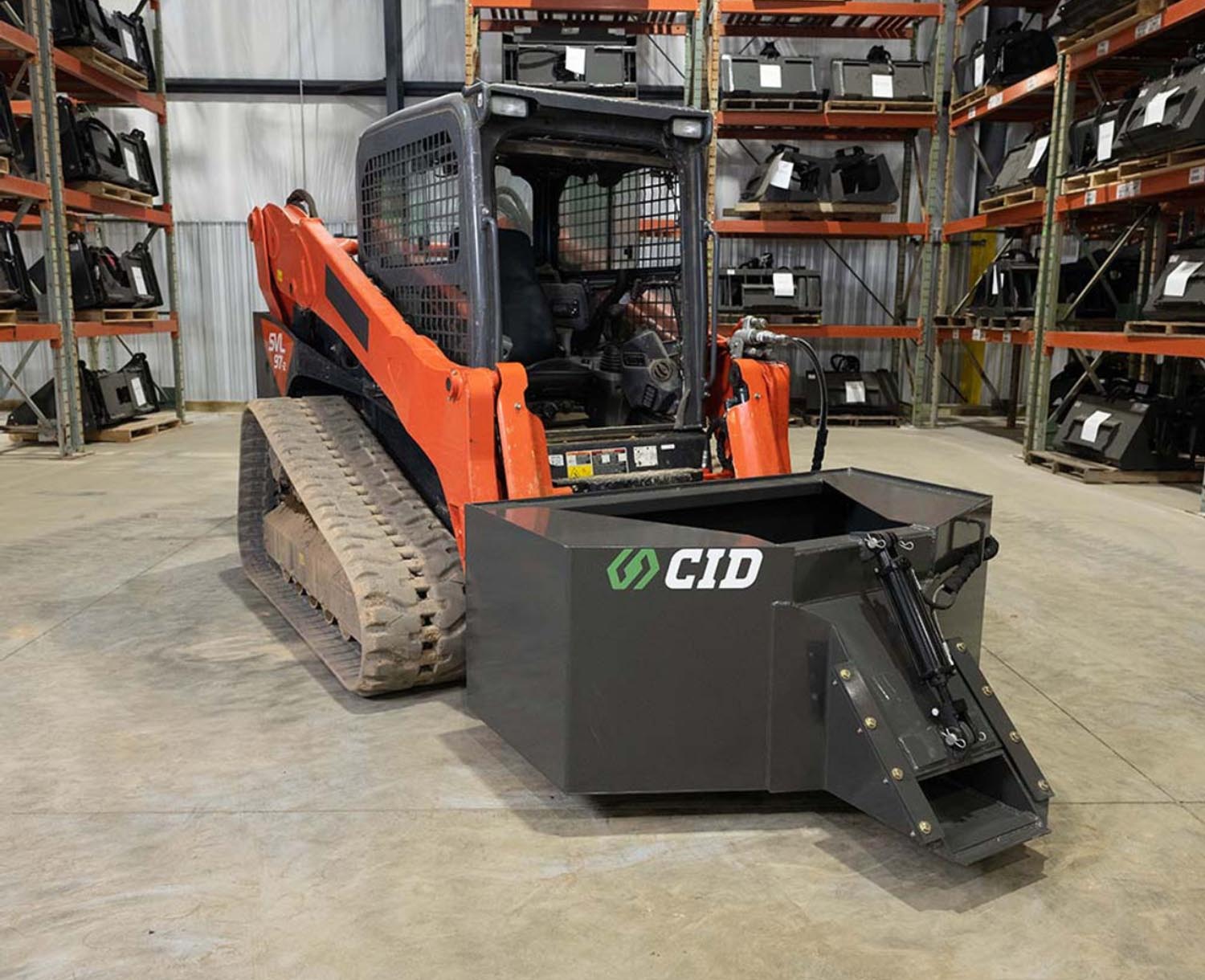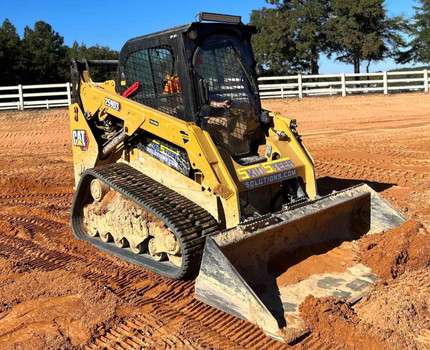What Can a Bucket Do For Your Skid Steer?
Posted by Jacintha Ham on 12th Mar 2024
Whether you're an experienced machine operator or a newcomer to the game, understanding the jobs a skid steer bucket can do will help you work smarter, not harder. From construction sites to landscaping projects, the possibilities for getting more efficiency out of your operations are endless.
The versatility of a skid steer can easily be improved when you choose the right attachment for the job. Here are the top 7 things you can do with skid steer buckets. We will also give you some tips for how to measure the capacity of the buckets to get the most bang for your buck.
1. Digging
The most common function a skid steer bucket has is digging. Whether you're scooping up soil, gravel, or something else. The ability to tilt and angle the bucket just how you need it gives you the perfect digging angle for maximum efficiency. Many skid steer buckets come equipped with features like replaceable cutting edges and bolt-on teeth, for easy customization and maintenance to fit the specs of each job.
2. Hauling the Heavy Stuff
Whether it's soil or debris, fill up that bucket and transport your materials across the job site. Skid steer buckets are famous for saving tons of time in material handling operations, especially high-capacity buckets and high dump buckets.

3. Leveling & Grading
Buckets can be used for leveling or reshaping surfaces. This is especially handy for preparing construction sites, landscaping projects, and even for specialty projects like track building. Whether you need to create jumps, whoops, or rollers, the bucket helps to achieve desired contours. The wide, flat-bottom skid steer buckets provide a stable platform for speedy and precise leveling. Even if you're working on rough terrain or in tight spaces, the maneuverability of your skid steer allows the bucket to navigate obstacles and achieve smooth, even surfaces with minimal effort.
Using a bucket to grade is simple, all you need to do is drag the bottom or cutting edge of the bucket across the ground. To get the finish you want you can easily adjust the angle and position of the bucket. If you need to repair a grade or construct a landscape feature you can use your bucket for spreading and distributing gravel, sand, or topsoil. Easily scoop up material and spread it evenly across the surface, for consistent coverage and a clean finish.
4. Backfilling
Backfilling trenches or holes is common on construction sites. A skid steer bucket can efficiently distribute and pack material. Whether you're refilling a trench after laying utility lines or filling in holes for landscaping projects, the skid steer bucket is the perfect tool for the job.

5. Sifting Soil
Rock and Screener buckets separate rocks and other debris from the soil. Skeleton Buckets allow you to pickup a scoop of dirt and watch it fall through the tines leaving you with only what you need. Rotating Screening Buckets need to be filled with material to efficiently separate rocks and debris according to size but, they allow for a much finer sift at hyper-efficient speed. Both these buckets help create smooth and even soil for any project.
6. Snow Removal
If you do not have a snowblade, you can use a bucket to turn your skid steer into a snow removal machine to clear driveways, sidewalks, or parking lots. While it may not have the same precision as a snow blade, a skid steer bucket has the agility and maneuverability to clear snow from hard-to-reach areas. Then, of course, you can use your bucket to transport snow into piles as you need.

7. Pouring Concrete
Concrete Buckets are specialized attachments that turn your skid steer into a mobile concrete pouring station. These bucket attachments allow you to pour concrete directly on-site, which really speeds up the construction process. Concrete buckets feature either a manual or hydraulic chute powered by the skid steer's hydraulic system, that accurately pours concrete exactly where you need it.
Bucket Capacity
Now that we have talked about all the different things you can get done with a skid steer bucket, it’s good to know how to determine what size bucket you need. So how do you find the capacity of a skid steer bucket?
Often the capacity is given on the product page of the attachment or in the manual. But, in case you forget or can’t find it, here’s how you can calculate it.
Measure Dimensions: Measure the length, width, and depth (or height) of the bucket. Ensure all measurements are in the same unit (e.g., inches, feet).
Option 1
Convert Measurements to Cubic Yards: Convert all measurements to yards if they are not already in that unit. For example, If the measurements are in inches, divide each measurement by 36 to convert to yards. If the measurements are in feet, divide each measurement by 3.
Calculate Volume: Use the formula for the volume of a rectangular prism: Volume = Length×Width×Depth.
Option 2
Convert Volume to Cubic Yards: If you have the volume in cubic feet and need to convert the volume to cubic yards, you have to divide it by 27 (since 1 cubic yard equals 27 cubic feet).
Here's the formula for the entire calculation: Cubic Yards = [Length (yards) × Width (yards) × Depth (yards)]/27
If you have the volume in cubic inch and need to convert the volume to cubic yards, you have to divide it by 46,656 (since 1 cubic yard equals 46,656 cubic inch).
Here's the formula for the entire calculation: Cubic Yards = [Length (yards) × Width (yards) × Depth (yards)]/46,656
Keep in mind that this is a simplified calculation and assumes a rectangular bucket shape. Real-life buckets may have variations in shape, and the actual volume may be a little different. If the bucket shape is more complex, you might need to use calculus or other advanced methods for a more accurate calculation. Or you can always just give our experts a call at 866-966-2538 and they will get you sorted out.





